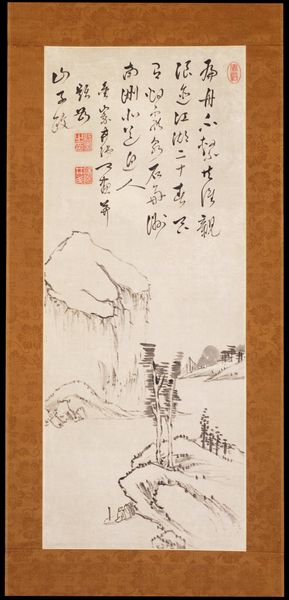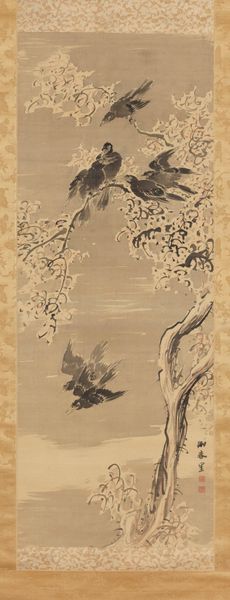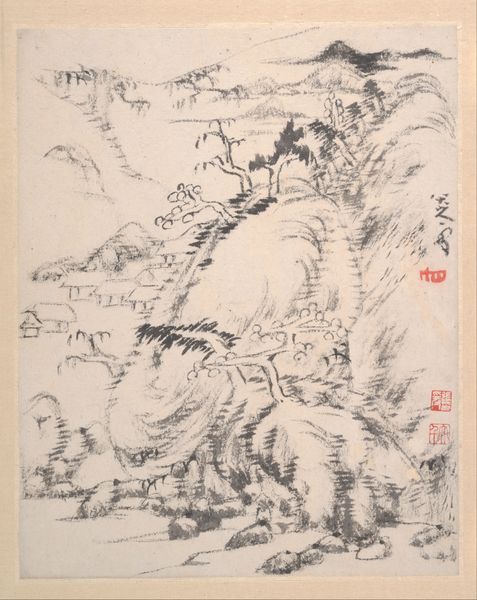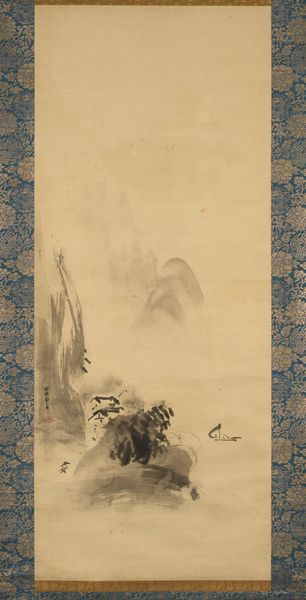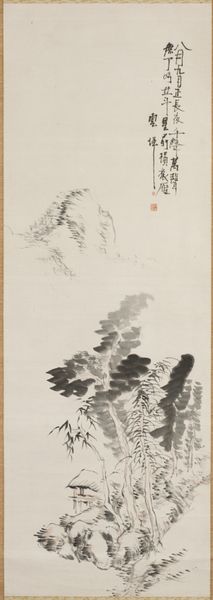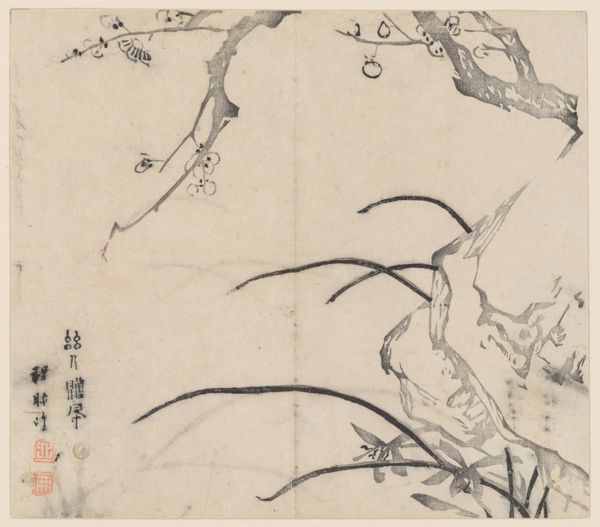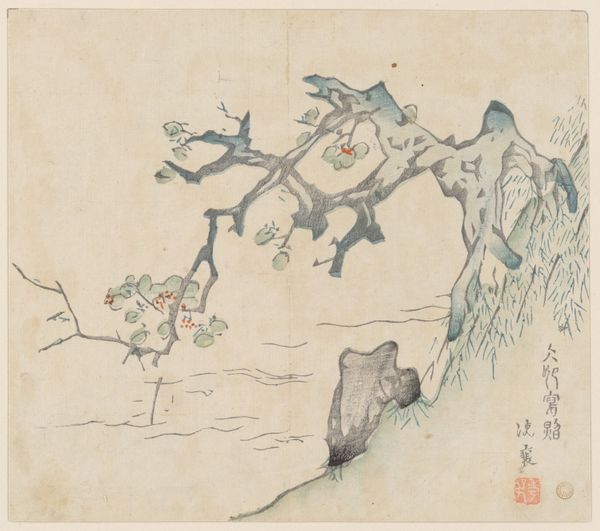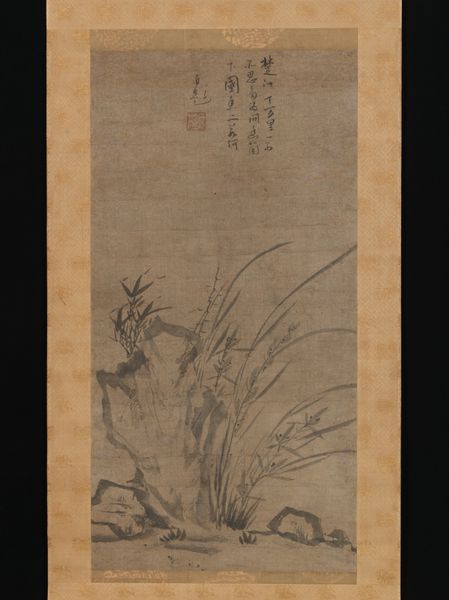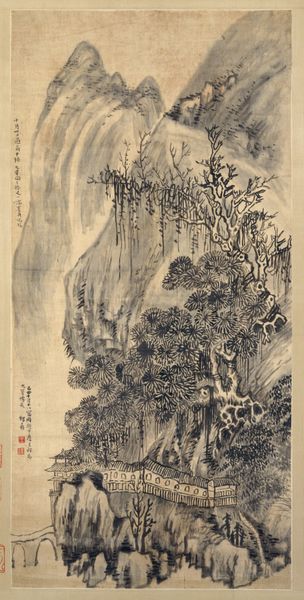
painting, paper, watercolor, hanging-scroll, ink
#
painting
#
asian-art
#
landscape
#
ukiyo-e
#
paper
#
watercolor
#
hanging-scroll
#
ink
#
line
#
watercolor
#
calligraphy
Dimensions: 10 3/4 × 9 1/4 in. (27.31 × 23.5 cm) (image)42 1/2 × 15 1/4 in. (107.95 × 38.74 cm) (mount, without roller)
Copyright: Public Domain
Editor: Here we have Yosa Buson's "Sea in Spring" from around the 18th century, an ink and watercolor painting on paper mounted as a hanging scroll. I'm really drawn to the expressive brushstrokes. They seem so spontaneous, and the composition feels quite modern. How would you interpret this work? Curator: What strikes me is not simply the expressionism, but the materiality involved. This wasn't just a 'painting' but a *produced* object. Consider the labor: the making of the paper itself, the grinding and mixing of the ink and watercolors from raw materials, the skilled calligraphy… Even the mounting as a hanging scroll speaks to specific artisanal traditions. What social functions were determined by this mode of display? Editor: That's interesting. I hadn't considered the social implications of a hanging scroll. Curator: Exactly. Was it meant for a wealthy patron’s home, or a more public space? The production of the paper itself tells a story. Think about where the materials sourced—what resources and labor extracted them from the environment and the political relationships created when exchanging material goods? This isn't simply a landscape; it’s an object produced within specific economic and social systems. How do the depicted figures and their tools within the image factor into this assessment? Editor: I see your point. Looking at the fisherman now, and his tools of labor – and it’s hard to separate them from the rest of the image. The calligraphic text must require expertise, too! I guess all art relies on material production and networks of exchange. Curator: Precisely. Understanding the materials and labor involved allows us to see this work as more than just an image. The artist is creating *with* resources within an economic network, challenging this idea of fine art and instead encouraging a material perspective. Editor: Wow, I’ll definitely consider all of these new factors for evaluating materiality. Curator: Hopefully this encourages you to consider these questions within a work of art. I would call that, quite frankly, 'laborious.'
Comments
No comments
Be the first to comment and join the conversation on the ultimate creative platform.
